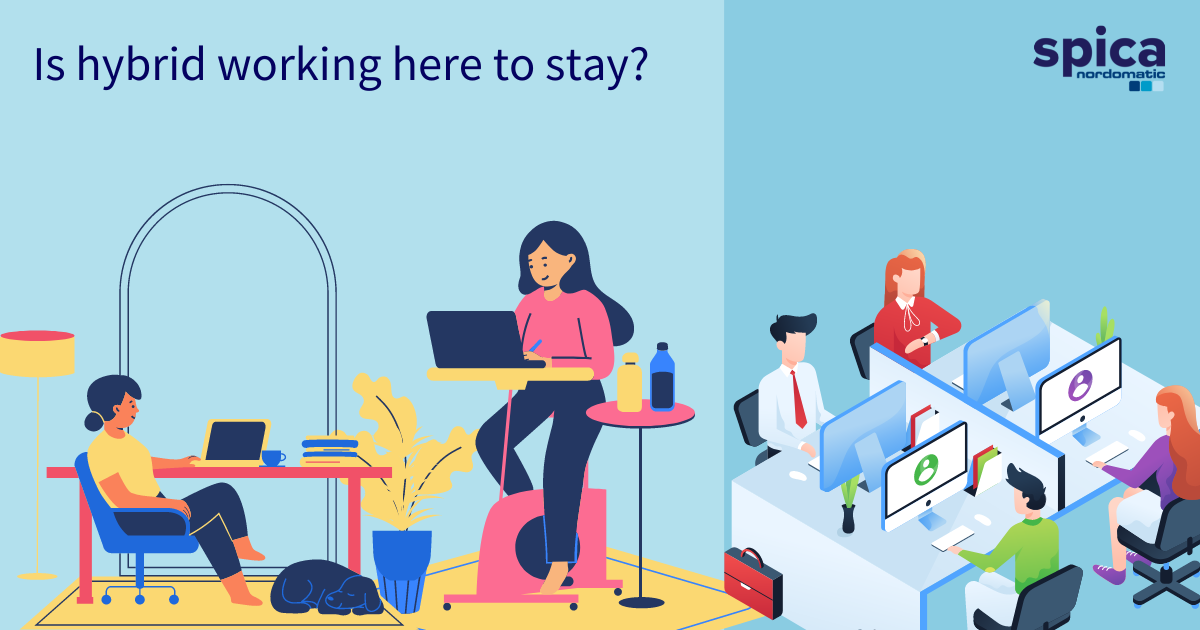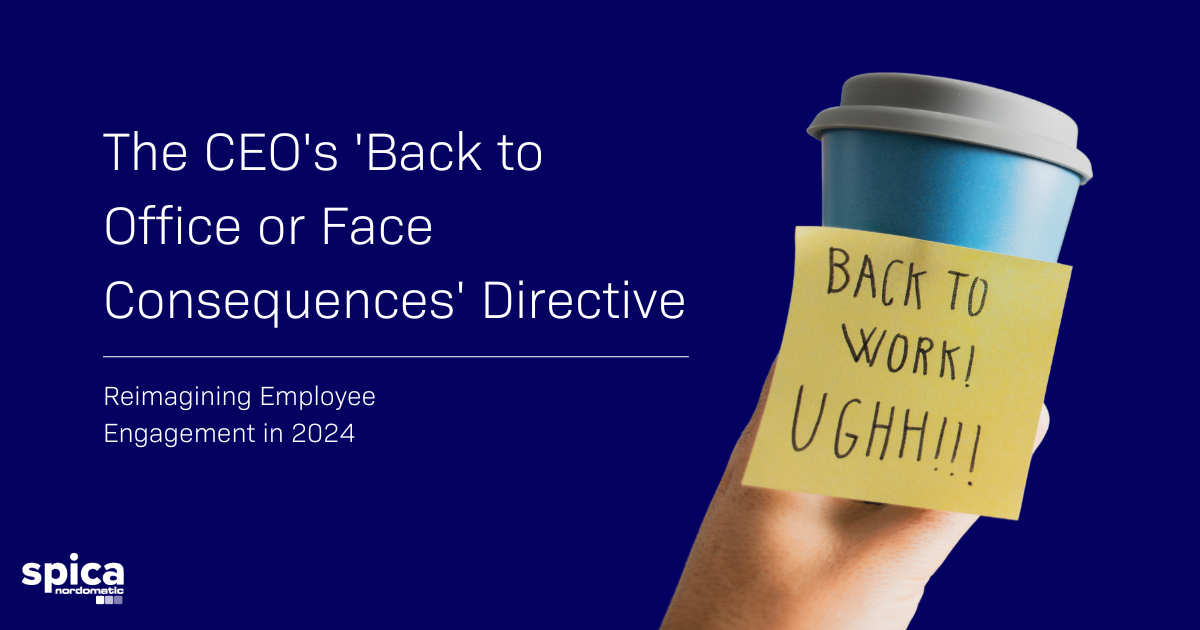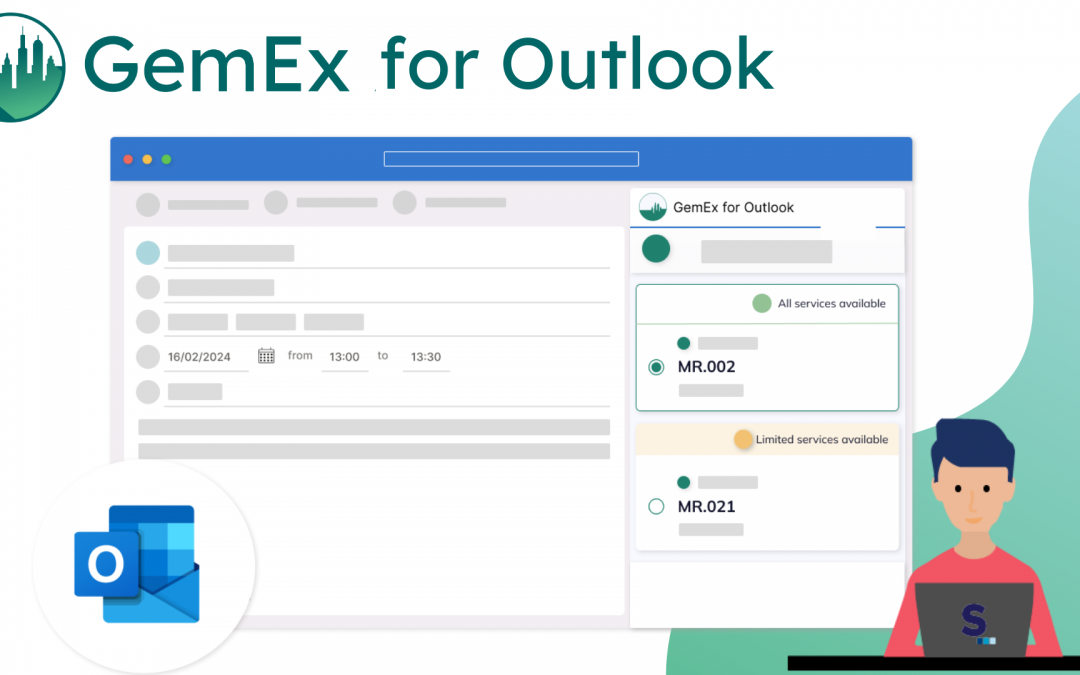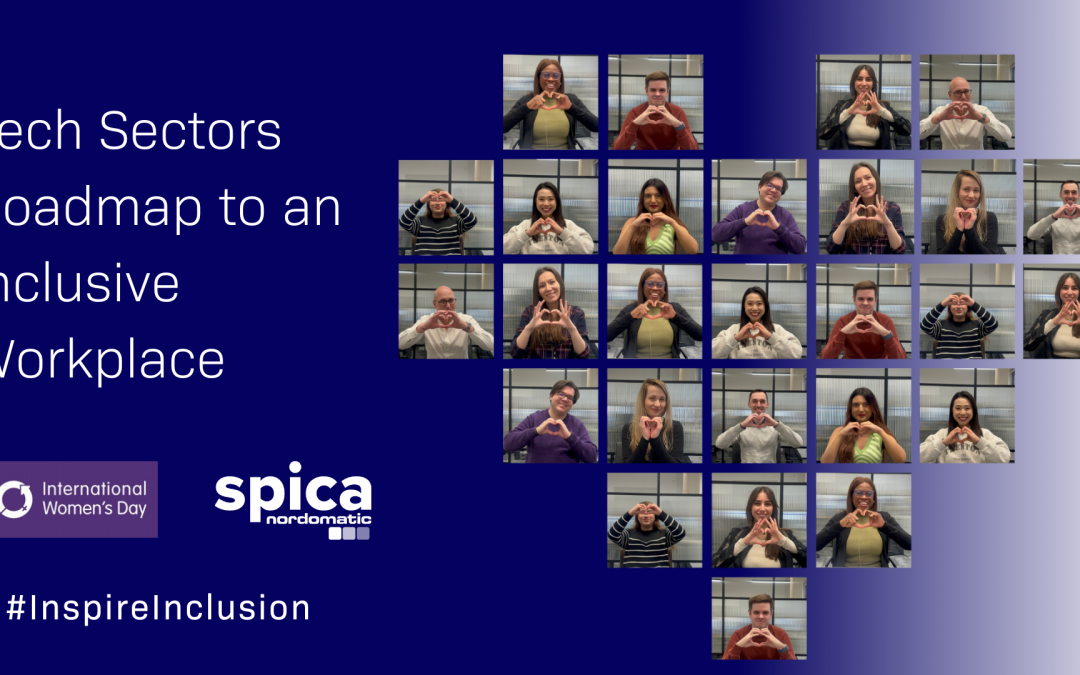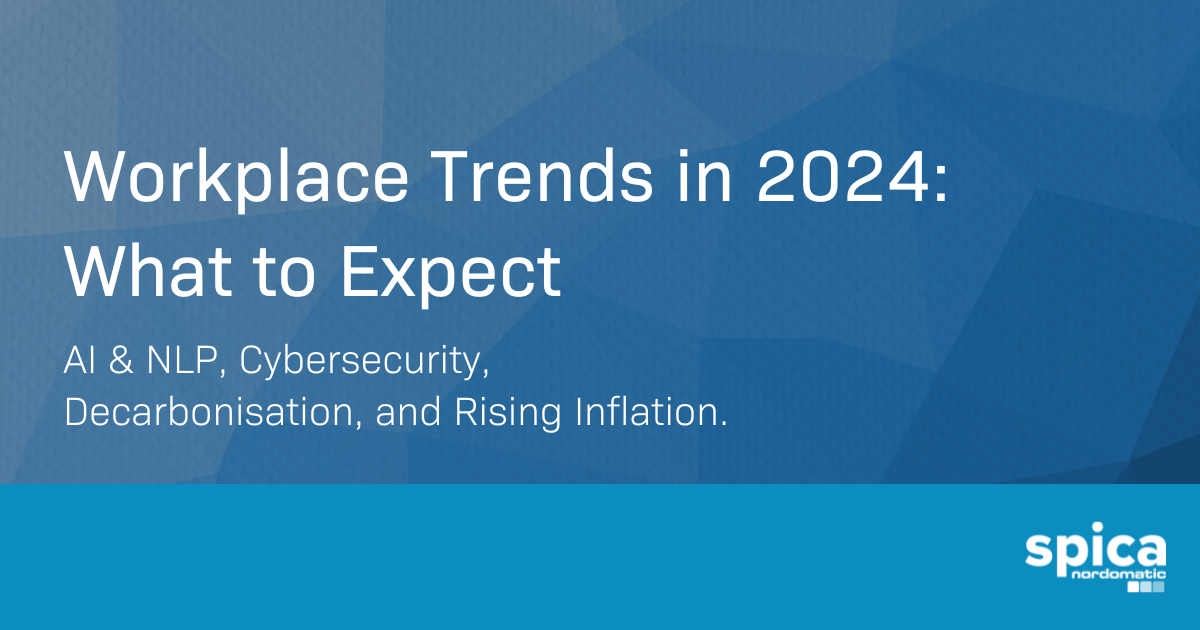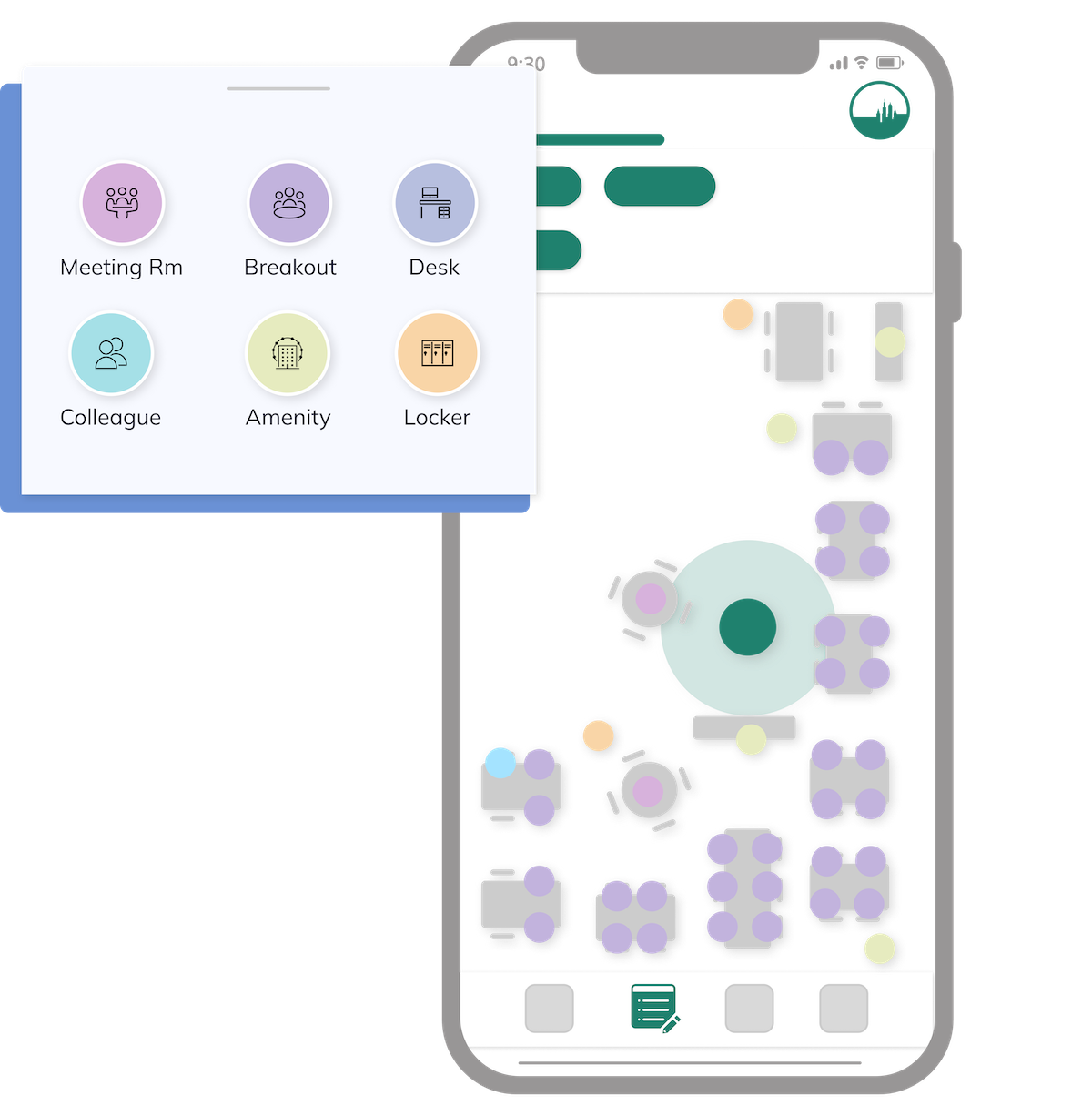What is Hybrid working?
Hybrid working is a model where employees divide their work time between the office and remote locations, such as home or co-working spaces. This approach has gained popularity since the COVID-19 pandemic, as it offers a more flexible and adaptable way of working.
The popularity of hybrid working
The Covid-19 pandemic had a devasting impact, but on the bright side, some positives can be derived from it as it has accelerated the shift towards hybrid working. Working from home was never a norm for companies but the pandemic forced them to adapt to remote work and social distancing measures.
Hybrid working allows employees to work in a safe and flexible way, while also maintaining some face-to-face interaction with colleagues. This model can benefit both employees and employers, as it can lead to increased productivity, reduced costs, and improved employee well-being. Furthermore, employers also reported that a transition to remote work has been effective for them 83% of the time, according to a PwC poll of 133 executives.
Recent studies have shown that hybrid working is becoming increasingly popular in many regions, with over 80% of companies planning to adopt a hybrid model post-pandemic. Some regions, such as Asia and Europe, have a higher proportion of companies offering hybrid working options. Here are the findings from surveys conducted by companies regarding hybrid working model:
- A global survey by McKinsey & Company found that 80% of companies are planning to incorporate hybrid working models post-pandemic.
- A survey by the Adecco Group found that 84% of companies in Europe are planning to implement a hybrid working model.
- A survey by Robert Walters found that 72% of companies in Asia are planning to adopt hybrid working models
Our LinkedIn Poll Results
To better understand the implications of hybrid working, we conducted two polls among our LinkedIn followers.
Poll #1: Opinion on 4-Day Workweek
In one poll, we asked respondents about their opinions on a 4-day workweek and found that 80% of them expressed a preference for it. The poll results indicate that employees are open to unconventional work arrangements that prioritize flexibility and work-life balance.

Poll 2: Factors Important in 2023
In another poll, we asked our followers to identify the factors that they believe will be important in 2023. Among the top considerations was the need for flexible work arrangements, with 50% of respondents indicating that it was a key priority. These poll results underscore the growing recognition among both workers and employers that flexibility is crucial for creating a productive, engaged workforce in the era of hybrid work.

Benefits of hybrid working
• Increased flexibility: Employees can adapt their schedules and work locations to their needs and preferences, leading to better work-life balance and reduced commuting time and costs.
• Diverse and inclusive workforce: Hybrid working can accommodate the needs and preferences of employees from different backgrounds and abilities.
• Higher productivity: Some studies have shown that employees who work remotely or in a hybrid model tend to be more productive than those who work in a traditional office environment.
Challenges of hybrid working
• Social isolation and reduced team cohesion: Remote or hybrid workers may feel disconnected from their colleagues and miss out on opportunities for face-to-face interaction.
• Communication challenges: Collaborating with colleagues who are working in different locations or time zones can be challenging, especially when relying on digital tools.
• Difficulties in establishing boundaries: The blurring of work and personal life can lead to burnout or decreased productivity.
It’s important to note that the benefits and challenges of hybrid working can vary depending on the specific company and industry. Employers should carefully consider their unique circumstances and consult with their employees to create effective policies and practices for hybrid working.
Technology Tools for Hybrid Working
Technology plays a key role in enabling hybrid working, as it allows employees to stay connected, collaborate, and access information from different locations. Some of the latest tools and apps that we use at Spica Technologies help us stay productive and engaged include:
- Slack: A communication and collaboration tool that allows team members to chat, share files, and collaborate on projects in real time.
- Microsoft Teams: A unified communication and collaboration platform that integrates chat, video conferencing, file sharing, and project management capabilities.
- Trello: A project management tool that uses visual boards, lists, and cards to help teams organize and prioritize tasks, track progress, and collaborate more effectively.
- Jira: A software development and project management tool that helps teams plan, track, and release software products, as well as manage agile workflows and issue tracking.
These tools can help employees work more efficiently and effectively, regardless of their location or work schedule.
How has hybrid working changed in 2022-2023?
- Greater emphasis on remote collaboration tools: With more employees working from home or other remote locations, companies may have invested more in digital collaboration tools such as video conferencing, instant messaging, and project management software.
- Increase in flexible work arrangements: With the success of hybrid working, companies may have implemented more flexible work arrangements such as hot-desking, job sharing, or part-time work.
- Emphasis on mental health and well-being: With the blurring of boundaries between work and home life, companies may have placed a greater emphasis on employee mental health and well-being by offering flexible work schedules, access to counselling services, and promoting work-life balance.
- Changes in office design: With fewer employees coming into the office on a regular basis, companies may have redesigned office spaces to prioritize collaboration spaces, meeting rooms, and hot-desking areas rather than individual workstations.
In conclusion, hybrid working offers many benefits for employees and employers, including increased flexibility, reduced costs, and improved well-being. At Spica Technologies, we understand the importance of supporting hybrid working and enabling our clients to adopt this approach. Our technology solutions, including the Spica Workplace app, can help you:
- Real time occupancy and desk booking capabilities allow employees to find and reserve a desk space in the office, while meeting room booking features enable teams to collaborate in-person when needed.
- Environmental alerts keep employees informed about air quality and other building conditions, promoting a safe and healthy workplace.
- News, events, and guides keep employees engaged and informed about company updates and initiatives. The app also allows employees to raise service requests and access building services, empowering them to take control of their work environment.
- With live occupancy and environment quality data, organizations can make data-driven decisions to optimize their real estate strategy and create a flexible, future-proof workplace.
- The app’s indoor navigation and colleague finder features save time and effort, making it easy for employees to navigate the workplace and connect with colleagues.
At Spica Technologies, we are committed to providing the latest tools and technologies to support hybrid working and help our clients achieve their goals. Contact us today to learn more about how we can help you transition to a more flexible and adaptable work culture.
Book a demo now where our digital workplace consultants will take you through the Spica Workplace App.


